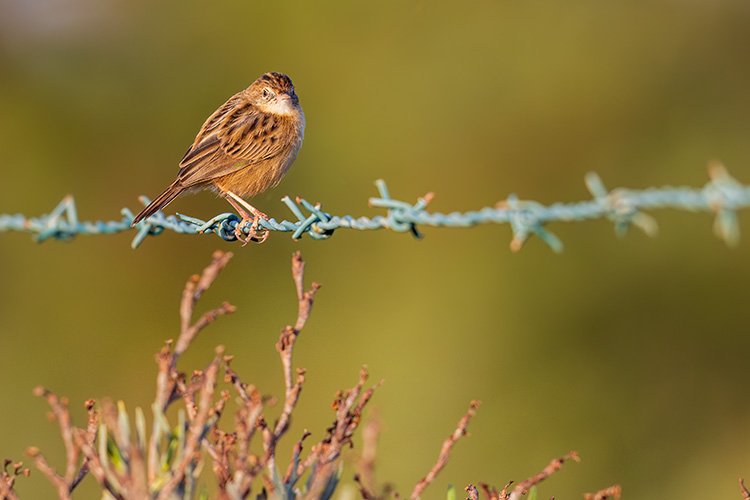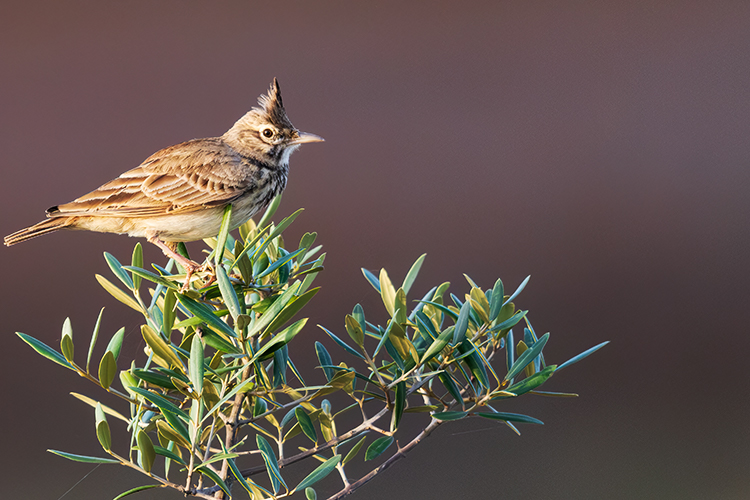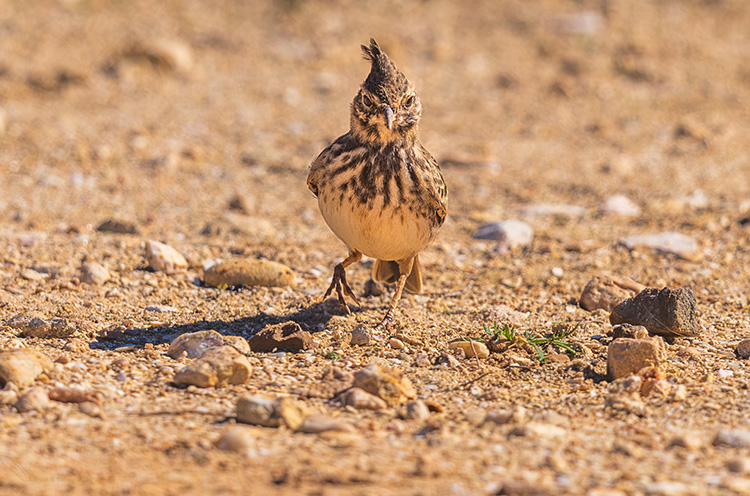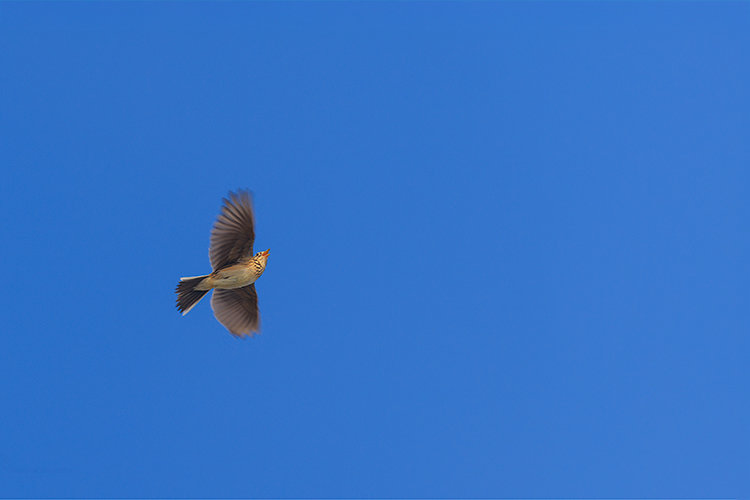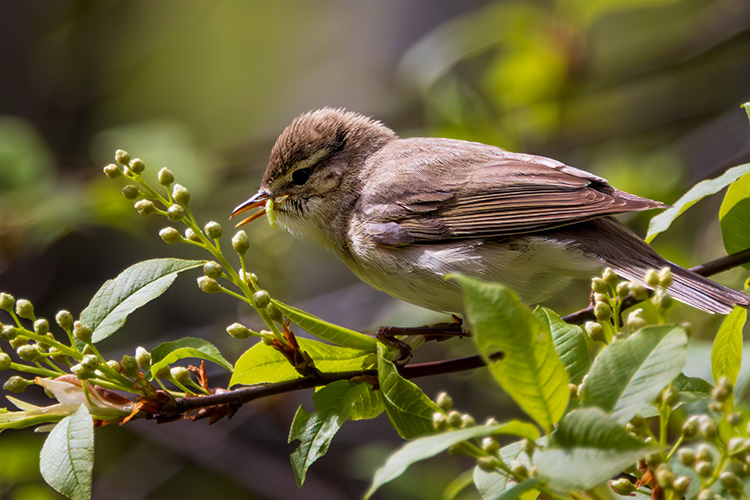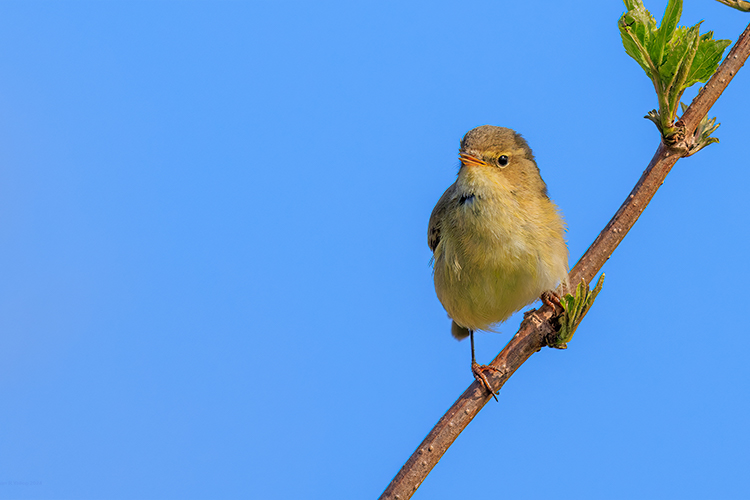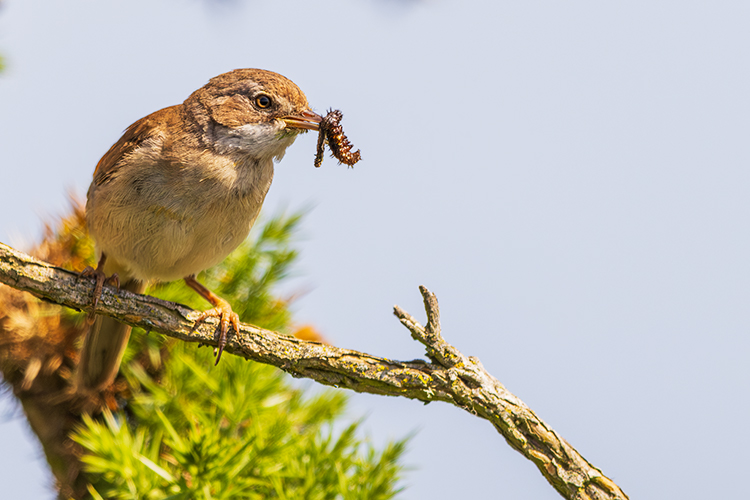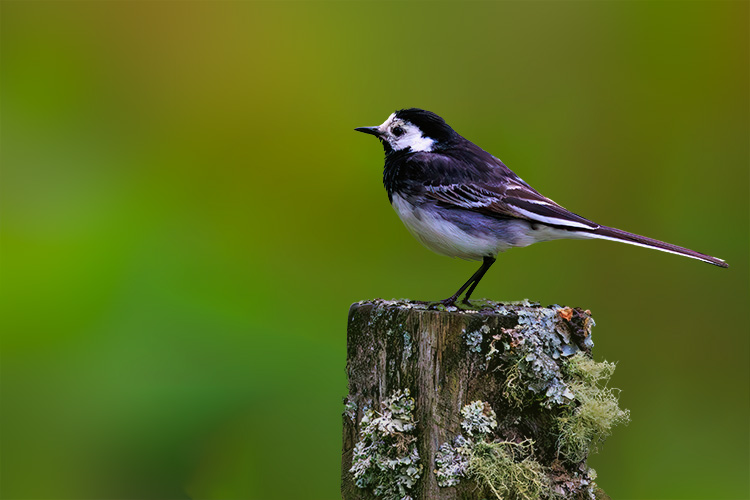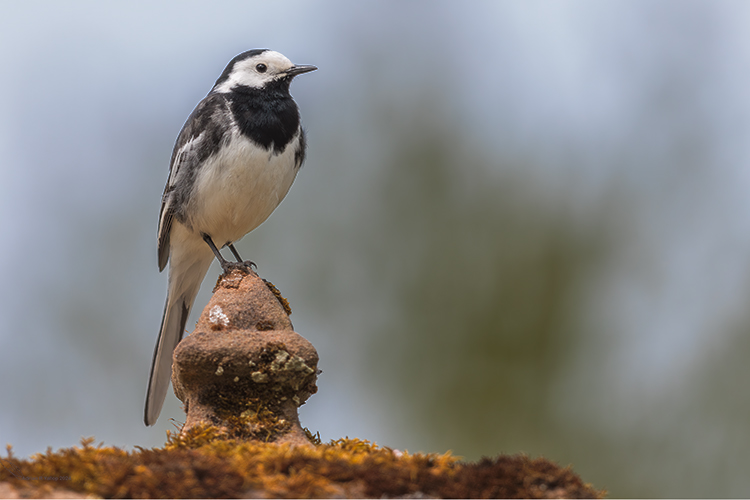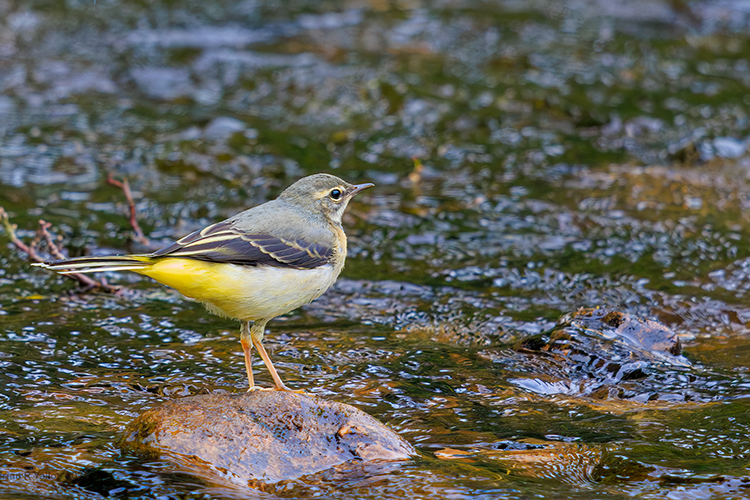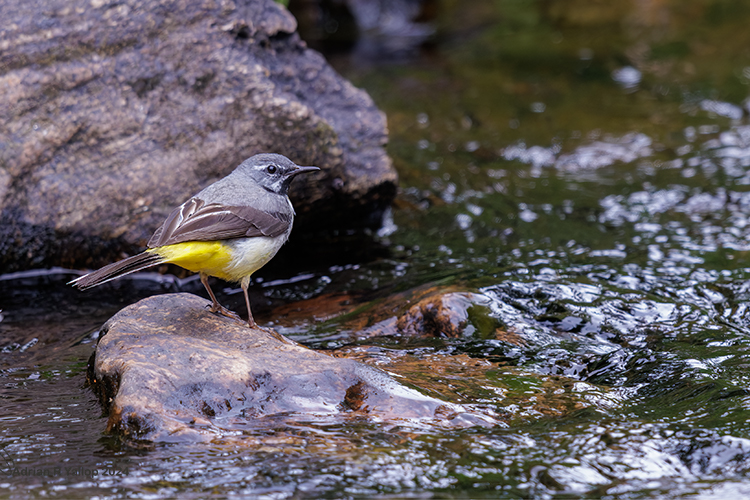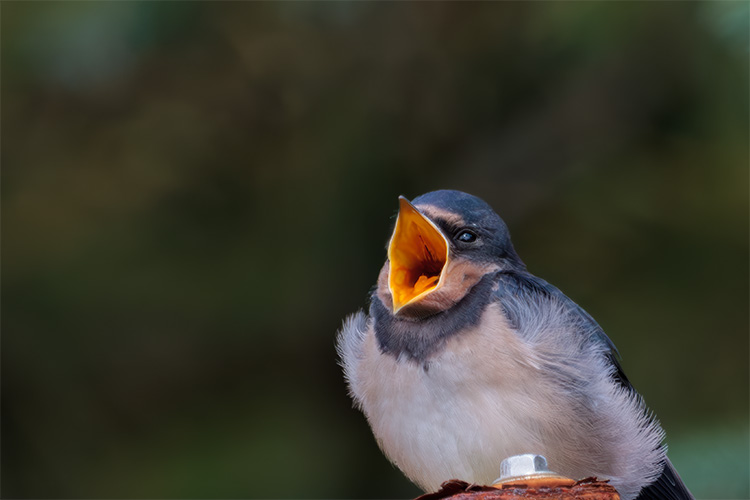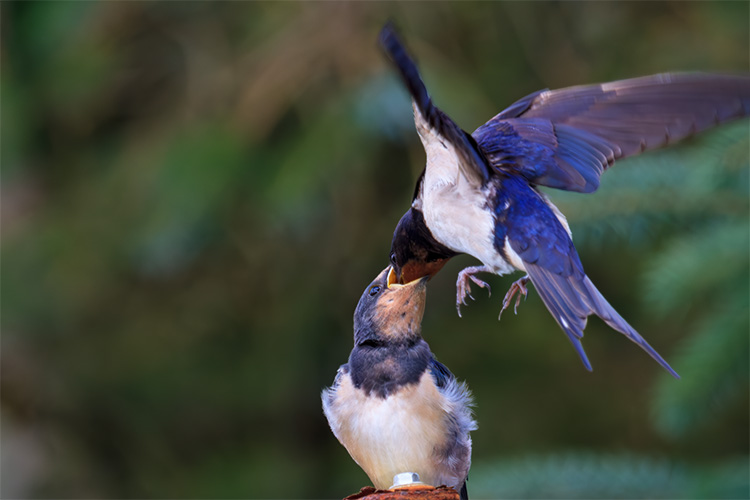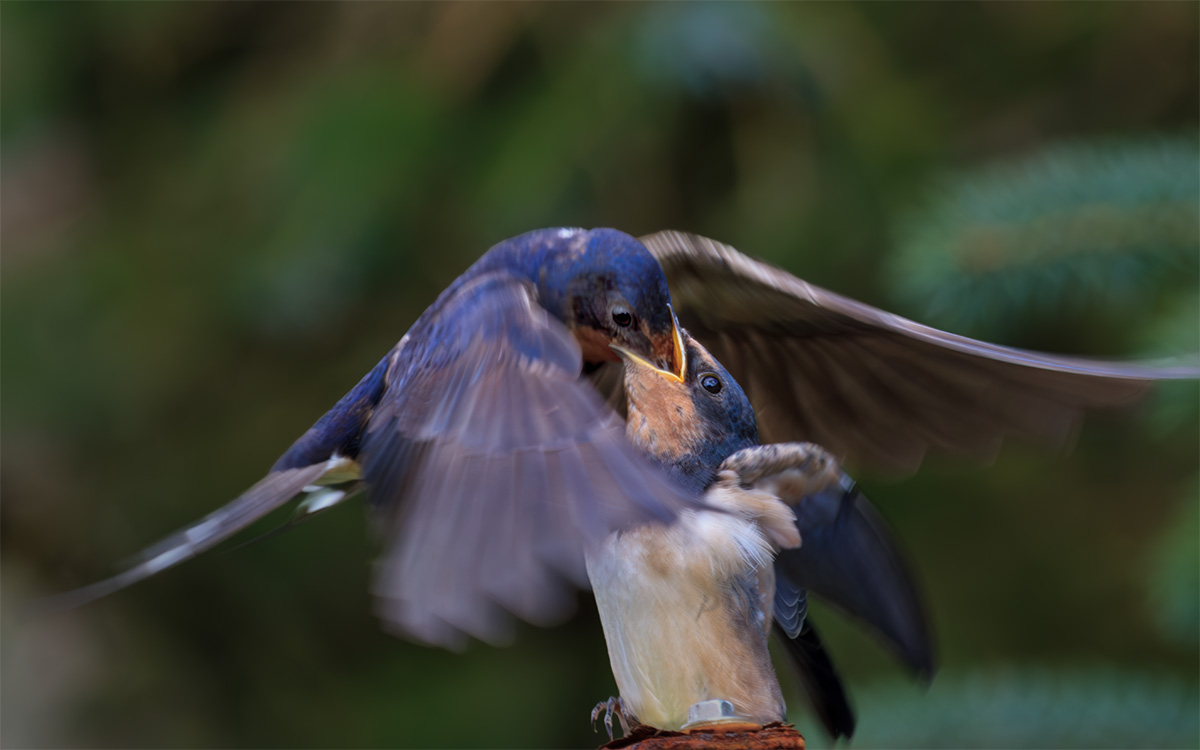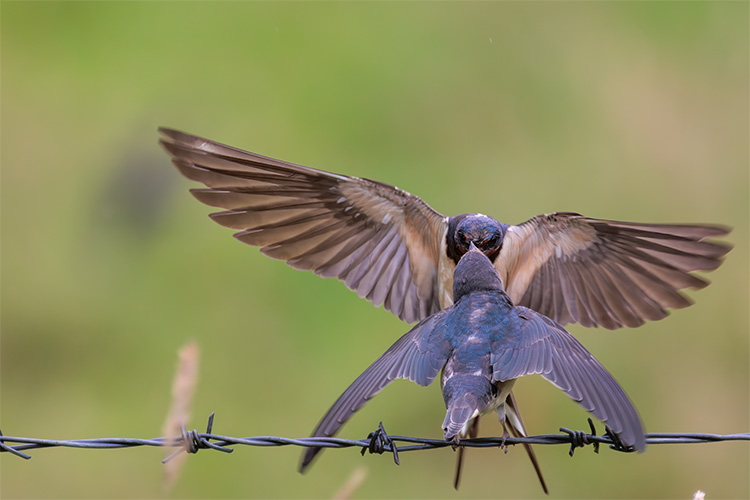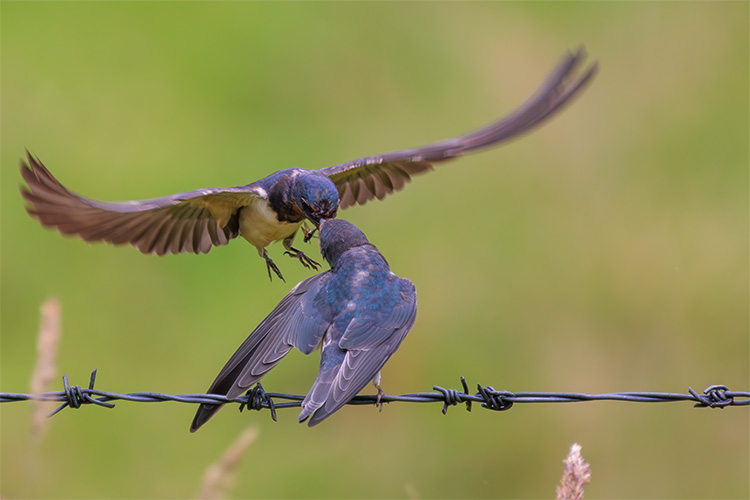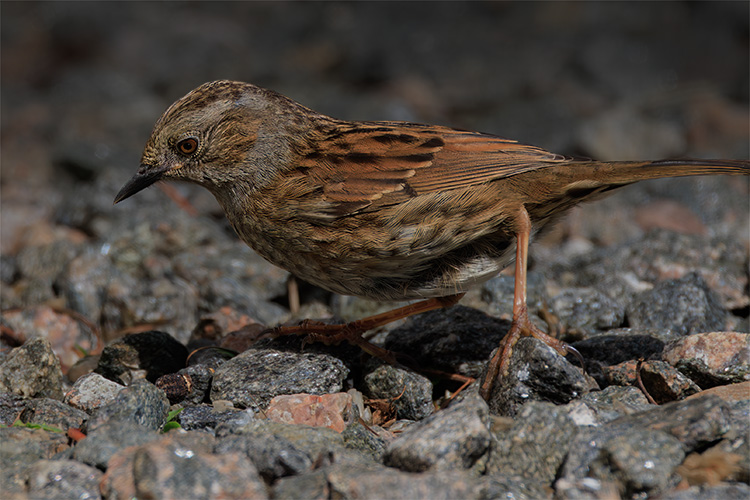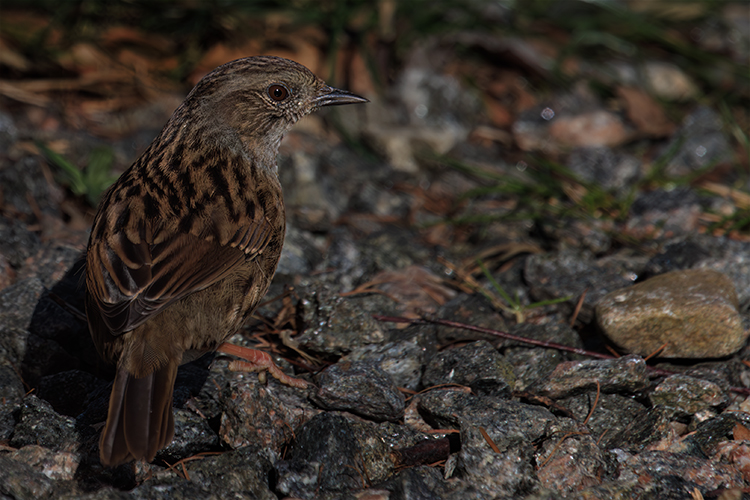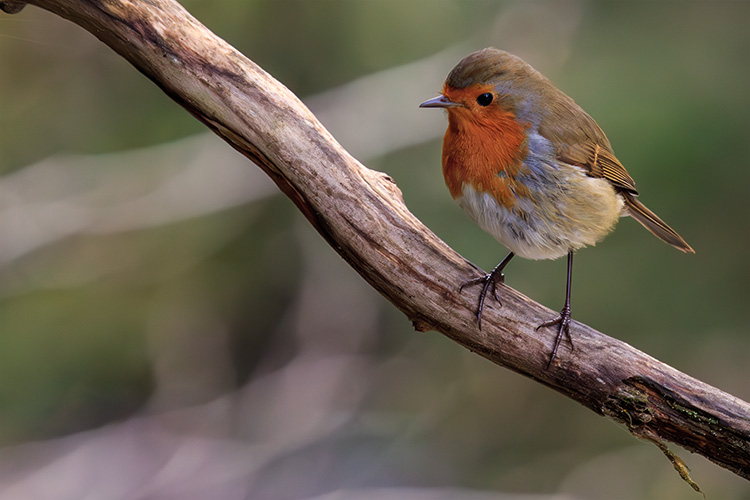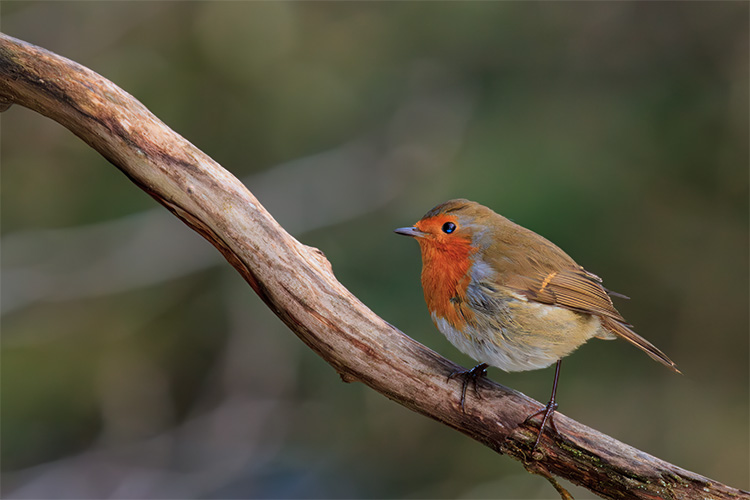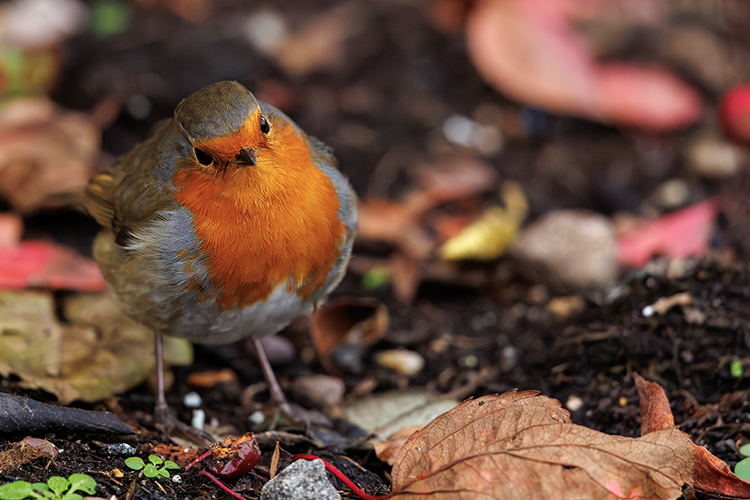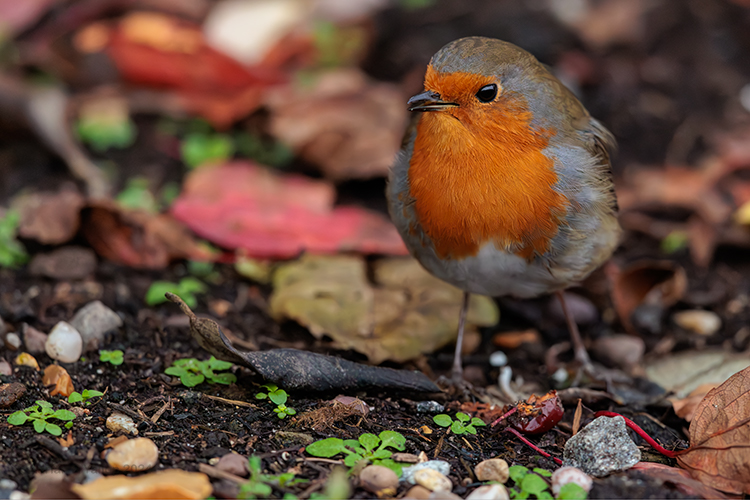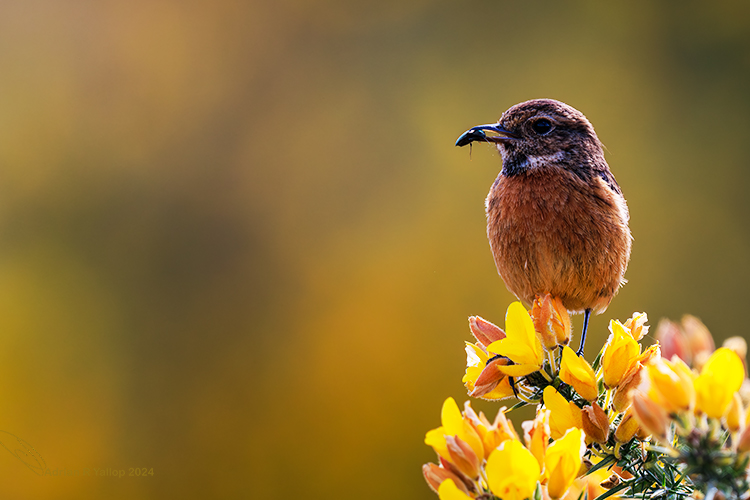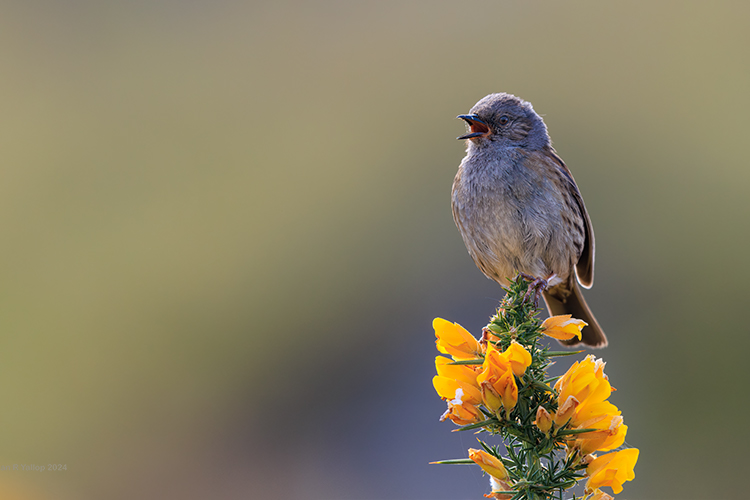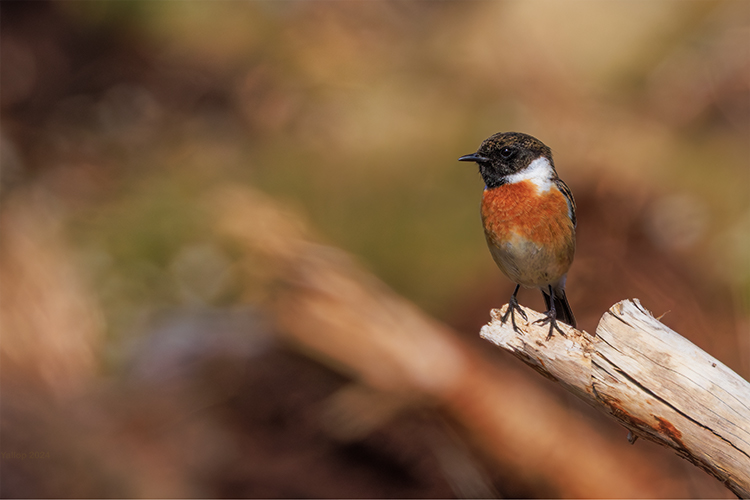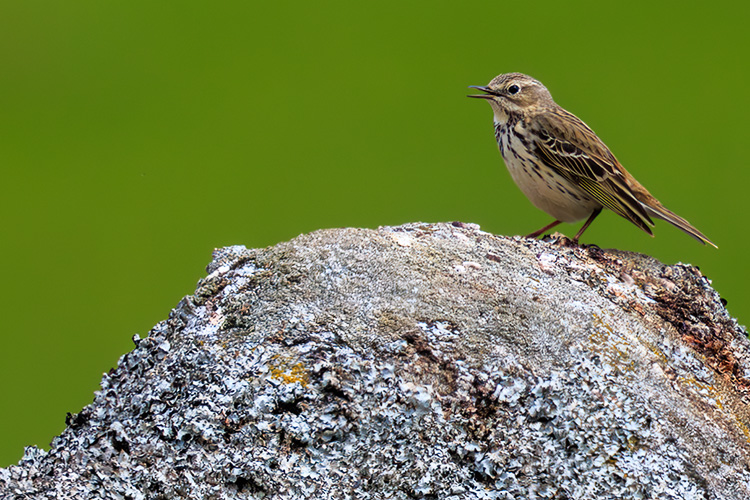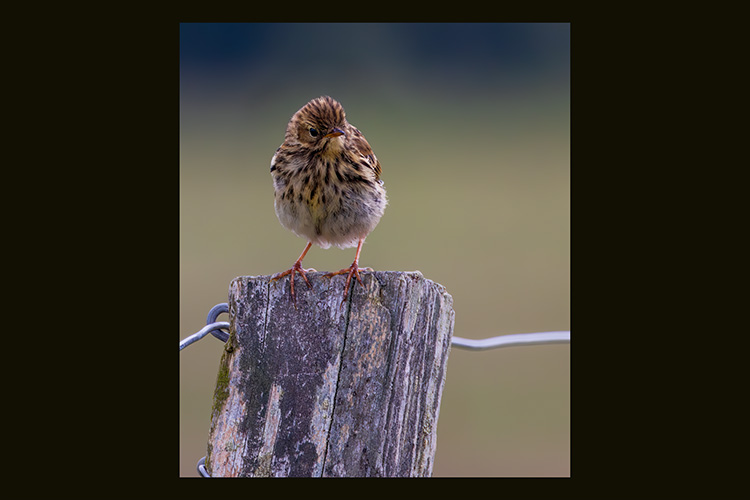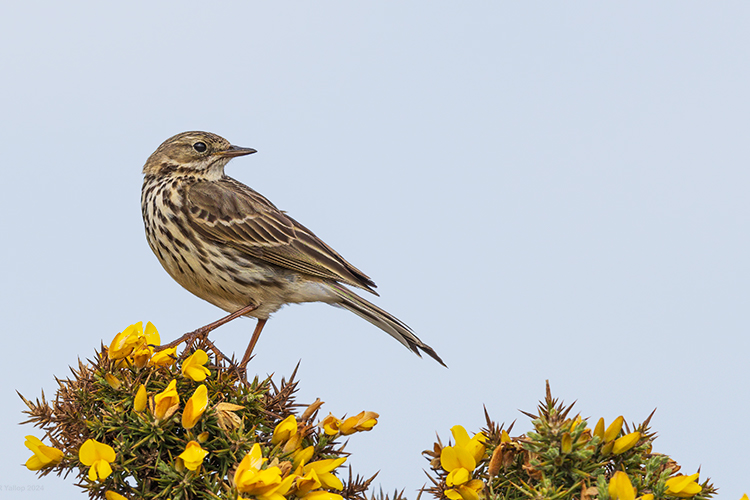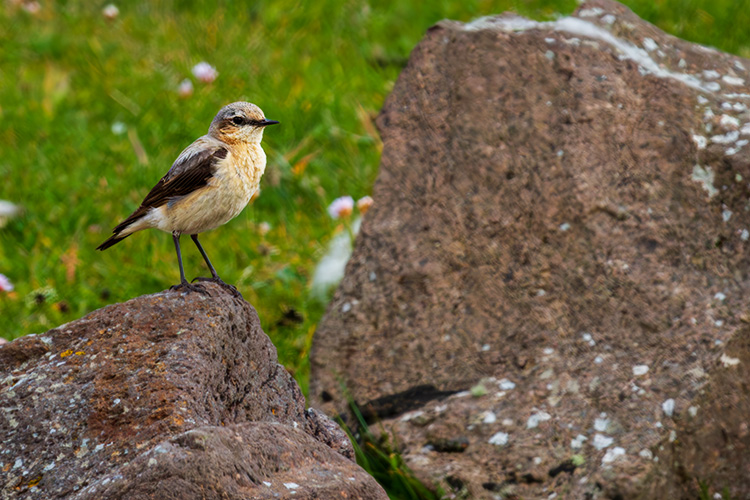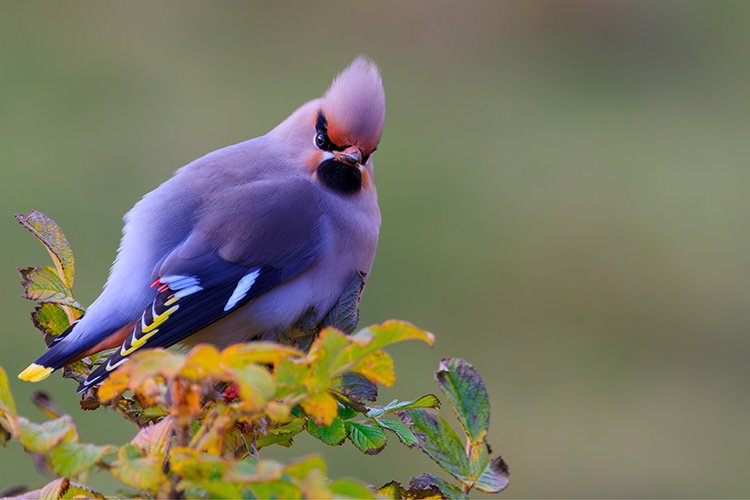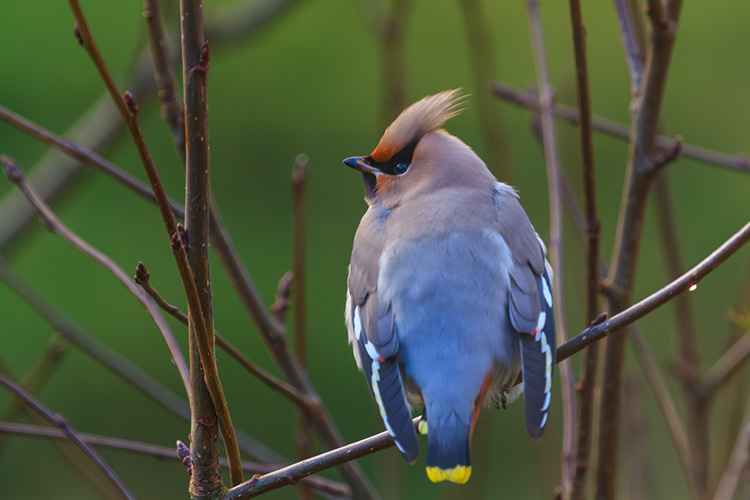
Zitting Cisticola Cisticola juncidis
This species was high on my 'want to photograph' list during a recent quick (oh too quick) trip to Portugal. But why? I can hear all you cry. Surely there's all those pretty birds like Bee-eaters, or skies full of big raptors, and this is just a classic LBJ (little brown jobby), and it's common ?
Well perhaps I am all sorts of juvenile, but it's the name you see. It sounds to me like some 50s trapeze act "The Zitting Cisticolas" or a 70's support band. But, and this is where I show my true intellectual depths, it could be the name for some sort of rather unfortunate veneral infection, as in, "... the Doctor say's I've got the zitting cisticolas again, it really itches like sh.."
An alternate name is sometimes used for this bird: 'Streaked fantail warbler". But where is the damned fun in the that?
They are actually great to watch: small groups actively flit low over tall grasses, suddenly darting sideways, making distinctive 'chip, chip' calls. There, then gone again.
Well perhaps I am all sorts of juvenile, but it's the name you see. It sounds to me like some 50s trapeze act "The Zitting Cisticolas" or a 70's support band. But, and this is where I show my true intellectual depths, it could be the name for some sort of rather unfortunate veneral infection, as in, "... the Doctor say's I've got the zitting cisticolas again, it really itches like sh.."
An alternate name is sometimes used for this bird: 'Streaked fantail warbler". But where is the damned fun in the that?
They are actually great to watch: small groups actively flit low over tall grasses, suddenly darting sideways, making distinctive 'chip, chip' calls. There, then gone again.
early morning
a quiet salinas ....
Well having said how much I wanted to photograph this species (for the most purile of reasons I am sure) I spent many hours on marshes around the Tagus where they abound, saw gazillions flitting about, as they do. Not one settling in sight long enough to capture, as they apparently don't do. Still it was migration time, one reason for going, and the skies were full (literally at times) of waders and duck arriving, so it wasn't boring. Still, after a few days no cisticolas were captured, or even close to being.
It also happens they, well their chums I guess, were abundant along the Algarve, and active in the early dawn hours, their calls giving them away, but would they sit still in sight for more than the merest moment? Nah! Then one did, and the old 'take one, creep forward, take another, creep forward, etc. etc. method' worked fine again.
And I so actually got one, and I quite like it. Despite me always going on about birds sitting in the most unaesthetic of places they can, here this barbed-wire actually 'works', I think. The acute angle of the wire and limited depth of field, make to offset this sweet little bird enjoying the first warmth of the morning sun. The colour of the wire too is interesting, it actually has that cyan colour, something to to with saltings perhaps? And the background, it's all about the background, almost matching yet serving to highligh the bird here.
So I have my Zitting Cisticola and pretty enough, I think, to head up this eclectic mix of passerines. Next time I'd better focus (pun intended) on those bee-eaters and rollers.
Well having said how much I wanted to photograph this species (for the most purile of reasons I am sure) I spent many hours on marshes around the Tagus where they abound, saw gazillions flitting about, as they do. Not one settling in sight long enough to capture, as they apparently don't do. Still it was migration time, one reason for going, and the skies were full (literally at times) of waders and duck arriving, so it wasn't boring. Still, after a few days no cisticolas were captured, or even close to being.
It also happens they, well their chums I guess, were abundant along the Algarve, and active in the early dawn hours, their calls giving them away, but would they sit still in sight for more than the merest moment? Nah! Then one did, and the old 'take one, creep forward, take another, creep forward, etc. etc. method' worked fine again.
And I so actually got one, and I quite like it. Despite me always going on about birds sitting in the most unaesthetic of places they can, here this barbed-wire actually 'works', I think. The acute angle of the wire and limited depth of field, make to offset this sweet little bird enjoying the first warmth of the morning sun. The colour of the wire too is interesting, it actually has that cyan colour, something to to with saltings perhaps? And the background, it's all about the background, almost matching yet serving to highligh the bird here.
So I have my Zitting Cisticola and pretty enough, I think, to head up this eclectic mix of passerines. Next time I'd better focus (pun intended) on those bee-eaters and rollers.
Crested lark Galerida cristata
Galerum = cap or hat, probably made of leather or skin and cristata = crest or crested; latin is just another language and most taxomonic monikers are pretty prosaic (which of course itself is derived from latin!).
There is a large group of crested larks, and to avoid upsetting numerous birders I don't think I'll venture at all into whether all of them are separate species, races or 'sub-species' (whatever they are supposed to be). Look I am a biologist and subscribe the concept of species that has meaning, no more, no less.
As a consequence (or cause) of all this profusion, there is a lot of confusion (!) about which crested lark might be which, cristata coexists over parts of its range with Thekla's lark. Amongst much arcane birder lore, there are a number of characteristics to differentiate one from t'other. Visible quite clearly here I think is bill shape, longer in crested and somewhat shorted and 'heavier' in Thekla apparently.
So, I'm calling this cristata , anyone want to disagree?
There is a large group of crested larks, and to avoid upsetting numerous birders I don't think I'll venture at all into whether all of them are separate species, races or 'sub-species' (whatever they are supposed to be). Look I am a biologist and subscribe the concept of species that has meaning, no more, no less.
As a consequence (or cause) of all this profusion, there is a lot of confusion (!) about which crested lark might be which, cristata coexists over parts of its range with Thekla's lark. Amongst much arcane birder lore, there are a number of characteristics to differentiate one from t'other. Visible quite clearly here I think is bill shape, longer in crested and somewhat shorted and 'heavier' in Thekla apparently.
So, I'm calling this cristata , anyone want to disagree?
crested lark on a bush, enjoying the morning 'rays'
On other dawn visits to these salinas, these little chaps (together with old zitting above) gave me the run around, popping up, flitting around, settling a long way off. Of course they were always close enough to tease (annoy) me, where would the fun for them be otherwise?
Well one morning this chap got too cocky by half, deciding he liked the early warming sun and would be too fast for me anyway, or perhaps he began enjoying it so much that his focus dropped a tad. Either way, slow creeping up to the fence he was safely hiding behind, I managed a couple with a nice neutral backdrop of water, and that will be pretty enough for me, especially as a long drive to the airport awaited me.
Well one morning this chap got too cocky by half, deciding he liked the early warming sun and would be too fast for me anyway, or perhaps he began enjoying it so much that his focus dropped a tad. Either way, slow creeping up to the fence he was safely hiding behind, I managed a couple with a nice neutral backdrop of water, and that will be pretty enough for me, especially as a long drive to the airport awaited me.
is it, isn't it ?
This picture is 'pants', you can see that.
In the strongest sun, in the early afternoon, this wasn't ever going to be a good or pretty picture, but he just looks so cute walking like that, that touseled little head an' all.
But here we are, at first look I was convinced I had another crista, but now, not so much. It could be a Thekla's. From here that bill looks stubbier, but perhaps it isn't!
I'll leave him here till someone tells me otherwise.
In the strongest sun, in the early afternoon, this wasn't ever going to be a good or pretty picture, but he just looks so cute walking like that, that touseled little head an' all.
But here we are, at first look I was convinced I had another crista, but now, not so much. It could be a Thekla's. From here that bill looks stubbier, but perhaps it isn't!
I'll leave him here till someone tells me otherwise.
Skylark Alauda arvensis
Such a melodic summer visitor, and one that would have been very common in earlier agricultural practices, might be expected to feature extensively in English folklore, and it does! Lark itself is a contraction of Laverock or Lavrock, both derived from the Anglo-Saxon láwerce. This may be linked to the similar Icelandic word lae-wirki, meaning a 'worker of guille' suggesting, perhaps, our anglo-saxon ancestors found them a bird of ill-omen.
A number of other early names for this bird are also derived from the Anglo-Saxon inc. Learrock (Lancs), Lerruck (Orkney) and Sky Laverock (Roxborough). In addition, we have Field Lark, Short-heeled Lark (Scotland) Lintywhite (Suffolk, possibly related to Linnet) and 'Our Lady's Hen' (Shetland).
The fine folk of Brandenburg are quoted as saying:
" Eine Lerche , die singt,
noch keinen Sommer bringt,
doch rufen Kukuk und Nachtigall,
so ist es Sommer überall. ”
Now, I bet you didn't think you'd learn that today! It means, loosely, the song of one lark does not bring summer, but when the cuckoo and the nightingale are heard, then summer has really come. This presumably relates to the fact that skylarks frequently sing during transient interludes of nice weather in spring. The Scots, presumably in between knocking the heads of Yellowhammers for fun (click to follow), have a similar proverb “As long as the laverock sings before Candlemas it will be greet after it”
There are numerous onomatopoeic interpretations of the skylark's song in the folklore of many European countries, for example, the French peasant-folk interpreted the song made on the birds upward rising flight as a plea to Saint Peter to admit her to paradise:
"Pierre, laisse moi entrer,
Jamais plus ne faut'rai,
Jamais plus ne faut'rai.",
She is clearly refused entry, as on her downward flight, she spitefully sings:
“J'faut'rai : j'faut'rai : j'faut'rai.".
I think the last bit of folklore for today will have to be that in Germany the bird used to be considered as under the protection of the Blessed Virgin, which gave us the Dutch Liebling der Gottheit.
No, hang on, I have to finish with the belief that one should never point a finger at a lark, "because if we do a whitlow is sure to come". I’ll let you look ‘whitlow’ up, it’s a handy word to sometimes drop into conversations, as in: "I've got a right bugger of whitlow, had it for days". And now I know you're going to have to look it up!
The fine folk of Brandenburg are quoted as saying:
" Eine Lerche , die singt,
noch keinen Sommer bringt,
doch rufen Kukuk und Nachtigall,
so ist es Sommer überall. ”
Now, I bet you didn't think you'd learn that today! It means, loosely, the song of one lark does not bring summer, but when the cuckoo and the nightingale are heard, then summer has really come. This presumably relates to the fact that skylarks frequently sing during transient interludes of nice weather in spring. The Scots, presumably in between knocking the heads of Yellowhammers for fun (click to follow), have a similar proverb “As long as the laverock sings before Candlemas it will be greet after it”
There are numerous onomatopoeic interpretations of the skylark's song in the folklore of many European countries, for example, the French peasant-folk interpreted the song made on the birds upward rising flight as a plea to Saint Peter to admit her to paradise:
"Pierre, laisse moi entrer,
Jamais plus ne faut'rai,
Jamais plus ne faut'rai.",
She is clearly refused entry, as on her downward flight, she spitefully sings:
“J'faut'rai : j'faut'rai : j'faut'rai.".
I think the last bit of folklore for today will have to be that in Germany the bird used to be considered as under the protection of the Blessed Virgin, which gave us the Dutch Liebling der Gottheit.
No, hang on, I have to finish with the belief that one should never point a finger at a lark, "because if we do a whitlow is sure to come". I’ll let you look ‘whitlow’ up, it’s a handy word to sometimes drop into conversations, as in: "I've got a right bugger of whitlow, had it for days". And now I know you're going to have to look it up!
I did not say ouch!
My eyes aren’t all that good really: lots of ‘floaters’, and I can’t cope with glare very well. Hence, spotting birds in the sky is highly problematic, especially small ones. So guess what bird I decided to make a project 2025. Yup, a Skylark! In essence I’d hang around meadows, listening to them singing, squinting upwards like a deranged penitent, trying to spot one. Well, this all this went about as well as might be expected, and many a day was wasted.
Then, one day, between a pebble beach and salt-marsh. I heard one or two singing. So, naturally enough, I adopted my gormless upward-staring stance. I actually managed to spot one as it coasted down and settled, perhaps 50m away. Then, before I could find him on the ground, he was up and away into the sky again, singing his heart out. Right over my head. Somewhere.
‘Bastard’ I thought, as I sought him again against the bright sky. But could I bloody find him? Looking almost vertically up through the camera, I spun around, nothing, then for a few moments there he was – I hit the shutter button, got a very quick burst. I try to track his movement more by continuing to gyrate, then I step back to make it easier.
I was, well had been, standing on the edge of terraced pebbles. The time it took to fall flat on my back was quite short, it just seemed longer. As my arse, and then shoulders, crunched onto the downward sloping shingle my head followed a moment later. It made quite an impressive thud I remember. ‘Bugger going-on about you again”, I hear you say, “What about the camera, was it OK dropping onto to the hard stones like that". Well, it was very lucky. My soft face cushioned the impact extremely well and no damage was done at all.
So it isn’t great, but it’s mine, and I paid for it with pain. Frankly I often think I shouldn’t be allowed out on my own.
Then, one day, between a pebble beach and salt-marsh. I heard one or two singing. So, naturally enough, I adopted my gormless upward-staring stance. I actually managed to spot one as it coasted down and settled, perhaps 50m away. Then, before I could find him on the ground, he was up and away into the sky again, singing his heart out. Right over my head. Somewhere.
‘Bastard’ I thought, as I sought him again against the bright sky. But could I bloody find him? Looking almost vertically up through the camera, I spun around, nothing, then for a few moments there he was – I hit the shutter button, got a very quick burst. I try to track his movement more by continuing to gyrate, then I step back to make it easier.
I was, well had been, standing on the edge of terraced pebbles. The time it took to fall flat on my back was quite short, it just seemed longer. As my arse, and then shoulders, crunched onto the downward sloping shingle my head followed a moment later. It made quite an impressive thud I remember. ‘Bugger going-on about you again”, I hear you say, “What about the camera, was it OK dropping onto to the hard stones like that". Well, it was very lucky. My soft face cushioned the impact extremely well and no damage was done at all.
So it isn’t great, but it’s mine, and I paid for it with pain. Frankly I often think I shouldn’t be allowed out on my own.
Spotted Flycatcher Muscicapa striata
From its nesting habits has been called Wall bird, Beam bird, Rafter bird and Plat bird (pronounced plate as in wall-plate, ask a builder). Delightfully also called Cherry sucker, Cherry chopper or Cherry snipe it was often seen, yes you guessed it, around Cherry trees because of the insects drawn to them.
That was of course long before pesticides and modern industrial farming essentially 'sterilised' most of our countryside and extirpating our insect fauna. This loss of its food led to around a 92% decline in this species population since the 1960s. Simply put, no-one listened to Joni Mitchell's plea:
Hey farmer farmer
Put away that DDT now
Give me spots on my apples
But leave me the birds and the bees
Please!
Fortunately, the part of Scotland where I live is mostly highland grazing and flying insects abound, so these delicate birds can still survive. I'll trade having my face chewed-off by midges to retain the chance to watch them any day. In Somerset it was thought they brought luck, as in the saying:
" If you scare the fly-catcher away,
No good luck will with you stay. "
Judging by the last half century or so, they may have had a point.
That was of course long before pesticides and modern industrial farming essentially 'sterilised' most of our countryside and extirpating our insect fauna. This loss of its food led to around a 92% decline in this species population since the 1960s. Simply put, no-one listened to Joni Mitchell's plea:
Hey farmer farmer
Put away that DDT now
Give me spots on my apples
But leave me the birds and the bees
Please!
Fortunately, the part of Scotland where I live is mostly highland grazing and flying insects abound, so these delicate birds can still survive. I'll trade having my face chewed-off by midges to retain the chance to watch them any day. In Somerset it was thought they brought luck, as in the saying:
" If you scare the fly-catcher away,
No good luck will with you stay. "
Judging by the last half century or so, they may have had a point.
dinner
a quiet churchyard....
I'd seen a few flitting around a small graveyard for a few weeks, as you do. So what could be more relaxing than a quiet little sit down in the sun, leaning against a tombstone (no disrespect), and waiting an hour to see what would appear. And yes, along she came, choosing the pointed pinnacle of a tall granite memorial to perch. At last, a bird that picked something fairly aesthetic to sit on!
On her third or fourth visit she was carrying this juicy grasshopper.
I'd seen a few flitting around a small graveyard for a few weeks, as you do. So what could be more relaxing than a quiet little sit down in the sun, leaning against a tombstone (no disrespect), and waiting an hour to see what would appear. And yes, along she came, choosing the pointed pinnacle of a tall granite memorial to perch. At last, a bird that picked something fairly aesthetic to sit on!
On her third or fourth visit she was carrying this juicy grasshopper.
I think she's looking for her chick to feed
she spent a lot of time looking around, not sure if she's looking for something else to catch or for her chick to appear - anyway I took the chance to move slightly closer.
a few more minutes and she flew off - and yes there was a newly fledged chick sitting on a nearby wall , with it's mouth open.
please note I certainly cannot tell ♂ and ♀ spotted flycatchers apart, like many birds they exhibit no real sexual dimorphism, so this could readily be a chap feeding his chick.
a few more minutes and she flew off - and yes there was a newly fledged chick sitting on a nearby wall , with it's mouth open.
please note I certainly cannot tell ♂ and ♀ spotted flycatchers apart, like many birds they exhibit no real sexual dimorphism, so this could readily be a chap feeding his chick.
Willow warbler Phylloscopus trochilus
Well, this chap (might be a lady) has been known by dozens of names inc: Willow wren, Willow sparrow, Sally picker, Ground wren and Ground isaac for its habit, with colour giving rise to, amongst others: Yellow wren, Golden wren, White wren. This latter from Scotland where a paler greyer 'race' is more common, as is seen here. It's nest has led to it being called: Bank jug, Hay bird, Strawsmeer, Feather bed and Feather poke, Grass mumruffin, Muffle wren and Willie muftie. It has been called Oven bird, Oven tit and Ground oven for some reason, with Tom thumb or Millers thumb for it size. My favourite of this incomplete list is Huck Muck, no idea why.
dinner
more food for demanding children
yes, it can be an total bugger to tell one of these from a chiff-chaff by sight. Fortunately, I'd heard them calling a few minutes earlier.
Even, then I wonder how many will tell me it is a chiff-chaff !
yes, it can be an total bugger to tell one of these from a chiff-chaff by sight. Fortunately, I'd heard them calling a few minutes earlier.
Even, then I wonder how many will tell me it is a chiff-chaff !
Chiff-chaff Phylloscopus collybita
Current name, of course, is an onomatopoeic one for it’s repetitive call. This also gave us Chip-chip and ‘Choice and cheep’ (Devon). I reckon we’d have also had ‘Chip-Shop’ if they had been around when early regional names we coined. Because of its close resemblance to the Willow Warbler (see above) many of its names were applied to it: Sally Picker (Ireland), Peggy (West Riding), Least Willow Wren. My favourites have to be Lesser-Petty-Chaps and Thummie, both for its small size. In Bedfordshire was also known as Bank-bottle or Bank-jug from the design of its nest.
As a species this bird appears to have no connections to the Devil, or his works, it can't even predict the weather. It just quietly gets on with it's job.
As a species this bird appears to have no connections to the Devil, or his works, it can't even predict the weather. It just quietly gets on with it's job.
death or sex
I have quite a number of images of this bird, taken over the course of perhaps ten minutes, as he sings his heart out. All of them show what could be described as 'conventional' views. It is this one tho', where stance and posture, create a sweet, almost comedic, look, that is my favourite. Perhaps I’ll put a different one in one day.
Bird-song is dangerous. Not to us obviously, but to the singer. Think about it. This little bird is small, dull, drab, and stealthily furtive, all to escape the attention of those who would consider him a nice tasty snack. Yet every year he has to sit out exposed on an isolated stick and make as much noise as possible. Effectively shouting out to any passing predator “Hi, look at me, I’m over here. Hello, hello, anyone hungry”.
All to get laid.
The evolutionary reasons for the extraordinary sex drive of the male of all species is blindingly obvious, all part of first year undergraduate Ecology and Evolutionary Biology studies. I suspect the interweb won’t tell you tho’ because it will all be about humans, what self-absorbed little creatures we are. Either read a book on sexual selection, ask me sometime, or another Ecologist. Don't ask a creationist tho', they'll go red.
Bird-song is dangerous. Not to us obviously, but to the singer. Think about it. This little bird is small, dull, drab, and stealthily furtive, all to escape the attention of those who would consider him a nice tasty snack. Yet every year he has to sit out exposed on an isolated stick and make as much noise as possible. Effectively shouting out to any passing predator “Hi, look at me, I’m over here. Hello, hello, anyone hungry”.
All to get laid.
The evolutionary reasons for the extraordinary sex drive of the male of all species is blindingly obvious, all part of first year undergraduate Ecology and Evolutionary Biology studies. I suspect the interweb won’t tell you tho’ because it will all be about humans, what self-absorbed little creatures we are. Either read a book on sexual selection, ask me sometime, or another Ecologist. Don't ask a creationist tho', they'll go red.
it must have worked
Well around a couple of months have passed and it is obvious that his singing worked, and now it’s time for the hard labour, the feeding, the endless feeding. This is something they don’t dwell on in Evolutionary Biology lectures.
Of course I don’t know if this is the same bird at all, even if it was close to where I saw him before. But, you know how I like a happy story, and I don’t like to think of my previous model being nothing more now than a decomposing pile of predator pooh.
Of course I don’t know if this is the same bird at all, even if it was close to where I saw him before. But, you know how I like a happy story, and I don’t like to think of my previous model being nothing more now than a decomposing pile of predator pooh.
Pied Wagtail Motacilla alba
This very noticeable little bird attracted a fair number of local names. The constant flicking of its tail giving us: Quaketail, Waggie, Nanny wagtail and Wille Wagtail. Their frequent occurrence near ponds and streams gave rise to Water wagtail, Wattie Wagtail, Waterie and Wattie. All nice for sure, but the 'best' set of names comes from the imagined likeness between the flicking of a pond surface by its tail as it hops from water-lilly to water-lilly, or stone to stone, and the beating actions of a washerwomen! This gave us: Dishwasher, Moll washer, Peggy dishwasher, Molly washdish, Polly washdish, Nanny wastail and Dishlick.
In Dorset, the tapping of a pied wagtail's bill on a window was considered a sign of impending death. A miniature version of Poe's Raven perhaps, just with a waggier tail.
In Dorset, the tapping of a pied wagtail's bill on a window was considered a sign of impending death. A miniature version of Poe's Raven perhaps, just with a waggier tail.
waggie on a stick
this little chap (?) brought a moment or two of colour to a very wet and grey day by popping up on an old fence post, and posing against a nice background of a rough pasture full of fresh growth.
Actually, this was the same time and place as some of the swallows feeding their young shown below, anyway it serves as my pretty picture of this species for now.
Actually, this was the same time and place as some of the swallows feeding their young shown below, anyway it serves as my pretty picture of this species for now.
who are you?
Well the idea for the day was to hang around, hiding behind a small bridge, to see if the pair of Grey Wagtails, you know, the ones I see all the time, when I’m not carrying the camera (!) would turn up again. As I kneeled there, my attention was drawn away to a Pied Wagtail flitting between some tall stone monuments in the churchyard a few metres from the stream where I was wasting my time.
Barely had the phrase ‘bugger this for a game of soldiers’ formed in my head when I rose, knees and back complaining bitterly, and wandered over to see if he wanted his picture taken instead.
He was absolutely fine with it, although he clearly wanted to know who I was in exchange. Fair enough.
Barely had the phrase ‘bugger this for a game of soldiers’ formed in my head when I rose, knees and back complaining bitterly, and wandered over to see if he wanted his picture taken instead.
He was absolutely fine with it, although he clearly wanted to know who I was in exchange. Fair enough.
monumental
After a few moments he/she is off again, this time perching for a moment on a stone monument, giving us a nicer picture.
Right, time to get back to my thankless wait for the Grey variety!
Right, time to get back to my thankless wait for the Grey variety!
Grey Wagtail Motacilla cinerea
Has a distinct paucity of previous names. Was known as: Winter Wagtail (South of England), Barley seed bird (Yorkshire) and Oat seed bird, these latter two for it’s appearance around march when sowing was occurring. Also sometimes called Yellow Wagtail (Lothian and Ireland).
And that’s it, no more, and there’s no folklore about it being the Devil’s handmaiden or whatnot, nada. This is surprising to me given their traits when it comes to trying to get their photograph, but I suppose no-one was taking pictures of them then and didn’t notice their evil little natures in that regard.
And that’s it, no more, and there’s no folklore about it being the Devil’s handmaiden or whatnot, nada. This is surprising to me given their traits when it comes to trying to get their photograph, but I suppose no-one was taking pictures of them then and didn’t notice their evil little natures in that regard.
bugger on a stone
I shan't go on about these birds, they are of course an active and colourful addition to our streams in summer. But for all their flitting about, hopping from stone to stone, leaping up to catch an insect, and of course that endlessly wagging tail, they have a truly vindictive streak. Oh, and precognition too.
I walk most days up past a small rocky stream, sometimes I will carry the big lens/camera, on others I just go for a walk. Now, here’s a thing. When I carry the camera, I do not see the Grey Wagtails that nest there. If I just walk past, sans camera, there they are, dancing about, leaping stone from stone, wagging to their hearts content, doing aerobatics. I can stand there and watch them easily, for a long time. Truly lovely. You might think I exaggerate, well I don’t. And don’t think I wasn’t trying when i had the camera. I would camo up, lay in sheep pooh, hide up my own arse, that sort or thing. Of course there was once a typical exception, I had camera and there were Grey Waggies, but yes they were a mile away. This has been going on so long now I accept it as a law of nature.
One day, and I joke you not, after walking past the stream with no camera, and seeing a family of four playing a few metres way, I broke, I wept, gnashing of teeth and things. After banging my face against the bridge for a few minutes I rush the 3 miles back home. Grab camera, in Landie, drive back. It was raining now to replace the sun of earlier, as I drive over the bridge I look, There they are, gone!! Bastards. Utter total bastards.
I park, get out strap the camera on and wait. And wait. Getting wet. Then one appears for exactly one minute, then flies off. One dull picture. But I had one, crap yes, but I had a bloody picture of this lovely but irritating bird.
I walk most days up past a small rocky stream, sometimes I will carry the big lens/camera, on others I just go for a walk. Now, here’s a thing. When I carry the camera, I do not see the Grey Wagtails that nest there. If I just walk past, sans camera, there they are, dancing about, leaping stone from stone, wagging to their hearts content, doing aerobatics. I can stand there and watch them easily, for a long time. Truly lovely. You might think I exaggerate, well I don’t. And don’t think I wasn’t trying when i had the camera. I would camo up, lay in sheep pooh, hide up my own arse, that sort or thing. Of course there was once a typical exception, I had camera and there were Grey Waggies, but yes they were a mile away. This has been going on so long now I accept it as a law of nature.
One day, and I joke you not, after walking past the stream with no camera, and seeing a family of four playing a few metres way, I broke, I wept, gnashing of teeth and things. After banging my face against the bridge for a few minutes I rush the 3 miles back home. Grab camera, in Landie, drive back. It was raining now to replace the sun of earlier, as I drive over the bridge I look, There they are, gone!! Bastards. Utter total bastards.
I park, get out strap the camera on and wait. And wait. Getting wet. Then one appears for exactly one minute, then flies off. One dull picture. But I had one, crap yes, but I had a bloody picture of this lovely but irritating bird.
has my luck altered?
so we have a picture of this white whale species, only a couple of days after the first, does this mean my luck with Grey Wags has changed? Well, I spent probably 40 mins waiting for this bird. I had seen a pair flitting off as I approached the stream, so just thought I'd wait, I did, and I did again. I wanderd off to watch over a superbly hidden wren nest I knew of nearby to see if there might be a picture of mum and dad going back and forth. Well they did come and go but not a hope of a picture without risking disturbance so I backed away. It is a lovely secure hidden location, I give them 10 out of 10 for it.
Oh, I'm prattling on again, right Grey Wags, well one agreed to perch on a rock for 30 seconds before flitting into the air, catching something, and settling upstream. Now look closely and you can see a wee mayfly living dangerously.
Oh, I'm prattling on again, right Grey Wags, well one agreed to perch on a rock for 30 seconds before flitting into the air, catching something, and settling upstream. Now look closely and you can see a wee mayfly living dangerously.
Swallow Hirundo rustica
Rev. Swainson collated some 6 pages of folklore and stories about the Swallow but lists few alternate names. The reason for the latter is unclear.
Of course, we are probably all familiar with the saying 'One swallow does not a summer make', but there is so much more. In Norfolk, the folk of Sheringham apparently said " before they leave, and sit in long rows on the church leads, they are settling who is to die before they come again.", cheerful buggers. Actually, such sentiments are not that uncommon. Whereas I find it charming and cheerful to watch and listen to these birds, esp when groups form and feed, much folklore links then with the devil and death. Many Celtic races derive reverence for the bird from fear and, in Ireland, was called the Devil's bird where country people held that there is a certain hair on every one's head which, if a swallow can pick off, the man is doomed to eternal perdition. Well at least that is one fate I am safe from! In parts of Scotland, it was said that each swallow had a drop of the Devil's blood in its veins and called it "Witch hag".
According to the Dictionnaire des Superstitions:Hirondell, in Comté it is said that if a swallow flies under a cow's belly the milk will become blood, and the cow is said to be arondalée or 'swallow-struck'. The only way to cure this was to tie the animal up in its stall, milk it, and sprinkle the milk at a spot where cross - roads meet.
In conclusion Swallows, like many birds are also credited with an ability to secure magical stones, in this case capable of restoring sight to the blind.
Of course, we are probably all familiar with the saying 'One swallow does not a summer make', but there is so much more. In Norfolk, the folk of Sheringham apparently said " before they leave, and sit in long rows on the church leads, they are settling who is to die before they come again.", cheerful buggers. Actually, such sentiments are not that uncommon. Whereas I find it charming and cheerful to watch and listen to these birds, esp when groups form and feed, much folklore links then with the devil and death. Many Celtic races derive reverence for the bird from fear and, in Ireland, was called the Devil's bird where country people held that there is a certain hair on every one's head which, if a swallow can pick off, the man is doomed to eternal perdition. Well at least that is one fate I am safe from! In parts of Scotland, it was said that each swallow had a drop of the Devil's blood in its veins and called it "Witch hag".
According to the Dictionnaire des Superstitions:Hirondell, in Comté it is said that if a swallow flies under a cow's belly the milk will become blood, and the cow is said to be arondalée or 'swallow-struck'. The only way to cure this was to tie the animal up in its stall, milk it, and sprinkle the milk at a spot where cross - roads meet.
In conclusion Swallows, like many birds are also credited with an ability to secure magical stones, in this case capable of restoring sight to the blind.
it's all about feeding the young
As any parent of young children knows, it's all about feeding them, it's no different in the bird world. Baby birds also mostly come with brightly coloured and enlarged gapes, just to reinforce the hint that 'me want food now and it goes here'. This little chap is deploying it to good use.
This is from Gardie in Shetland, where noise drew my attention to a pair of baby swallows, posed so aesthetically on an old broken rusting metal swing-frame. I seldom find a bird that gives a ..... about me wanting a pretty picture. They usually just perch somewhere convenient but grim.
This is from Gardie in Shetland, where noise drew my attention to a pair of baby swallows, posed so aesthetically on an old broken rusting metal swing-frame. I seldom find a bird that gives a ..... about me wanting a pretty picture. They usually just perch somewhere convenient but grim.
feed me
... a few minutes and pleading is quieted for a moment.
again - it's all about feeding the noise
Some older chicks here, in Strathnairn this time, but the noise, and the hard work, continue the same.
Again, as you can see, they picked a lovely beautiful barbed-wire fence to park the chicks on, always makes for a nice picture!
This was a truly dreadful wet miserable day, and flying around head-first in heavy-rain has seriously 'matted' the feathers of this mum's face.
Again, as you can see, they picked a lovely beautiful barbed-wire fence to park the chicks on, always makes for a nice picture!
This was a truly dreadful wet miserable day, and flying around head-first in heavy-rain has seriously 'matted' the feathers of this mum's face.
That rain-soaked face is clearer here, at full resolution it looks strangely like a Klingon's forehead. Mebbe the rain pounding on my head was making me hallucinate !
if anyone wants to know why I didn't use a higher shutter speed here to freeze the wings more, well I was hoping some blur might show something of the very dynamic nature of the scene as the parents were here and gone in a moment. I may have slightly over-egged it tho'. It was a dark day, and I was hitting the buffers on light. Judging the balance of aperture, ISO and shutter speed is tricky unless you're photographing a landscape on a tripod. Oh, and doing that in fractions of a second, while trying to track fast moving action with heavy lens, and in the rain, did I mention the rain, can be too much for my tired old brain sometimes.
if anyone wants to know why I didn't use a higher shutter speed here to freeze the wings more, well I was hoping some blur might show something of the very dynamic nature of the scene as the parents were here and gone in a moment. I may have slightly over-egged it tho'. It was a dark day, and I was hitting the buffers on light. Judging the balance of aperture, ISO and shutter speed is tricky unless you're photographing a landscape on a tripod. Oh, and doing that in fractions of a second, while trying to track fast moving action with heavy lens, and in the rain, did I mention the rain, can be too much for my tired old brain sometimes.
Dunnock Prunella modularis
Rev. Swainson lists many a name for this frequently skulking bird inc: Hedge spurgie, Bush sparrow, Hedge and Field sparrow, Hedge warbler, Hedge chanter, Hedge chat, Hedge spick and Hedge mike all for it often being seen in and around hedgerows. Of these I prefer Dykesmowler. Its colour gave us Blue Isaac, Blue Tom, Blue sparrow, Blue Jannie, Blue dickie. The short piping note it makes led to Titlene, Pinnock, Philip and Phip. The way it flutters its wings and hops on the ground gave rise to Reefouge, Creepie, Sparve and Blind dunnock.
There is a less than tasteful aspect to Dunnock's courtship and mating, but you'll have to look that up yourself!
There is a less than tasteful aspect to Dunnock's courtship and mating, but you'll have to look that up yourself!
usually hidden
I like Dunnocks, despite the fact they seldom stay still in the open, preferring to skulk around in the dark under-brush. I understand they're looking for insects, spiders etc for food, but give a guy a break.
This little chap decided he would play ball for a few moments.
This little chap decided he would play ball for a few moments.
blue or grey
I believe that, in bright sun - ie not in Scotland! - the head of the Dunnock can look blue, well blueish grey I guess, sadly in the shade of a dense tree, as here, it's simply grey-grey to me.
Robin Erithacus rubecula
Robin Redbreast, probably number one in UK bird popularity, Redbreast was in fact the primary name for this bold and colourful species in the 1800s, with Robin, Robin ruck and Bob robin. Ecologically it probably associated with animals like boar that rootled into the ground, the robin could then exploit the over-turned soil for exposed insects. This habit transferred well into early agricultural activity. Today pick up a spade and start turning-over the garden and likely you'll have one watching you ready to explore in a few moments, it's almost uncanny. Oh, many folk in the past believed that the Wren was the female of the Robin.
Such a popular bird has a good heritage of names and folklore. Ruddock, Reddick, Robin ruck, Bob robin, Red belly and Re bird clearly all relate to that obvious breast. This obvious colour means that, along with other red-bearing birds like the Great Spotted woodpecker and Swallow, it was associated with fire-bringing.
Of course, red also evokes blood and there are so many stories about this. In Germany, Scotland, and Yorkshire it was said that if a Robin was killed one of the cows belonging to the slayer would give bloody-milk. Swainson relates the story of a young woman who: told her family this happened to her last master. A male cousin of hers, disbelieving the tale, went out and shot a robin purposely. Next morning her uncle's best cow, a healthy one of thirteen years, that had borne nine calves without mishap, gave half a can-full of this bloody milk, and did so for three days in succession, morning, and evening. The liquid was of a pink colour, which, after standing in the can, became clearer, and when poured out, the 'blood' or the deep red something like it, was seen to have settled at the bottom.
According to a Breton legend: while our Saviour was hanging on the Cross a robin plucked a thorn from His crown, in pity, and, in doing so, wounded his own breast. As a reward he is endowed with a perpetual existence , and with the power of enriching a young girl every year. Now, while I think that 'enriching' bit is maybe worth exploring a tad further, let's move on.
Such a popular bird has a good heritage of names and folklore. Ruddock, Reddick, Robin ruck, Bob robin, Red belly and Re bird clearly all relate to that obvious breast. This obvious colour means that, along with other red-bearing birds like the Great Spotted woodpecker and Swallow, it was associated with fire-bringing.
Of course, red also evokes blood and there are so many stories about this. In Germany, Scotland, and Yorkshire it was said that if a Robin was killed one of the cows belonging to the slayer would give bloody-milk. Swainson relates the story of a young woman who: told her family this happened to her last master. A male cousin of hers, disbelieving the tale, went out and shot a robin purposely. Next morning her uncle's best cow, a healthy one of thirteen years, that had borne nine calves without mishap, gave half a can-full of this bloody milk, and did so for three days in succession, morning, and evening. The liquid was of a pink colour, which, after standing in the can, became clearer, and when poured out, the 'blood' or the deep red something like it, was seen to have settled at the bottom.
According to a Breton legend: while our Saviour was hanging on the Cross a robin plucked a thorn from His crown, in pity, and, in doing so, wounded his own breast. As a reward he is endowed with a perpetual existence , and with the power of enriching a young girl every year. Now, while I think that 'enriching' bit is maybe worth exploring a tad further, let's move on.
Robin on a stick
Trying to avoid cliché I decided against a picture of a Robin on a teapot, watering-can, fork-handle, rusting bucket, in snow, or sitting on a letterbox waiting for the postman to bring xmas cards. This is exactly why I have no contract with 'Hallmark'.
I thought these two pictures, taken a few minutes apart, captured the alertness and curious attention this species always seems to exhibit.
I thought these two pictures, taken a few minutes apart, captured the alertness and curious attention this species always seems to exhibit.
Quizzical
Looking for pretty urban bird pictures, not very productively as it happens, I’m meandering the streets and byways of Inverness again. A robin startles me as it flashes over a low fence a few feet from my face, crosses the road, and perches for a moment on a solitary bush adorning a small front garden. At last a bird, but before I can even react he drops out of sight behind a very low wall. I advance a few metres till I can see over it. He looks pretty as hops about amongst a few fallen autumn leaves so, standing in the middle of the road, the camera comes up and I find him in the viewfinder. He seems to look at me quizzically, as though asking why I want his picture. I take it anyway.
cute?
He asks me if he looks cute. “Of course you do” I reply. Well he does.
Stonechat Saxicola rubicola
Its alarm call, which some liken to two pebbles being struck together, gave us Stanechacker, Stone click, Chickstone and Stone clocheret, and probably it's current vernacular. The jerking of its tail, as if striking stones it is standing on, led to Stone smich or Stone smith and Stane chapper. Other local names inc: Moor titling, Blacky top or Blacky cap, Furze hacker and Furze chitter.
In the North of Scotland, it was thought that a toad would cover the eggs when the parents were away from the nest. In Galloway, the nest of the Stonechat was left undisturbed because it's call was said to be:
" Stane chack !
Deevil tak ' !
They who harry my nest
Will never rest,
Will meet the pest !
De'il break their lang back
Wha my eggs wad tak ' , tak' ! "
I do like these birds a lot, hearing their calls for the first time in spring is, for me, one of the most evocative harbingers of summer. Leaning back on a rock amongst the heather and the gorse, in the spring sun, eyes closed, just listening to them chatting away, is so totally relaxing and meditative. Go try it sometime, the ticks will be so pleased you visited.
However, trying to get close enough for a picture, before one flits off, to land atop another bush a mere 10 or 20 metres away, chatting loudly and, let's be honest, just taking the piss, is less relaxing, but I try anyway sometimes.
In the North of Scotland, it was thought that a toad would cover the eggs when the parents were away from the nest. In Galloway, the nest of the Stonechat was left undisturbed because it's call was said to be:
" Stane chack !
Deevil tak ' !
They who harry my nest
Will never rest,
Will meet the pest !
De'il break their lang back
Wha my eggs wad tak ' , tak' ! "
I do like these birds a lot, hearing their calls for the first time in spring is, for me, one of the most evocative harbingers of summer. Leaning back on a rock amongst the heather and the gorse, in the spring sun, eyes closed, just listening to them chatting away, is so totally relaxing and meditative. Go try it sometime, the ticks will be so pleased you visited.
However, trying to get close enough for a picture, before one flits off, to land atop another bush a mere 10 or 20 metres away, chatting loudly and, let's be honest, just taking the piss, is less relaxing, but I try anyway sometimes.
a little snack, or a dereliction of duty?
Walking back from yet another failed attempt to get pictures of grey wagtails, this is a frequent event, I could hear a lot of Stonechat activity ahead. Cautiously edging around a large rock, I see a pair, mum and a chick, flitting around settling on clumps of gorse. After watching for a few minutes I decide to play the stonechat ‘game’ again, and try and creep closer. The colours are nice, and mebbe, just mebbe, one might sit still long enough.
Well, I think the chick feeding thing has put them both off their game a tad, and I manage to slowly approach the bushes they are using. Creep closer, closer, though the viewfinder I frame and focus, yes it’s going to happen, it's really going to happen, then, just as I’m about push the damned shutter release, she flies off ……….
……… before I can move though she returns to exactly the same place, with a nice juicy beetle. I push the release and get a burst. This sort of thing might happen to others, but not me!
She holds it for a while, displaying it to her chick a few metres away, then she swallows it, gone. I do get a shot of that but her action sadly blurs the result, I wasn’t expecting this, thinking it was destined for the chick, ho hum.
Well, I think the chick feeding thing has put them both off their game a tad, and I manage to slowly approach the bushes they are using. Creep closer, closer, though the viewfinder I frame and focus, yes it’s going to happen, it's really going to happen, then, just as I’m about push the damned shutter release, she flies off ……….
……… before I can move though she returns to exactly the same place, with a nice juicy beetle. I push the release and get a burst. This sort of thing might happen to others, but not me!
She holds it for a while, displaying it to her chick a few metres away, then she swallows it, gone. I do get a shot of that but her action sadly blurs the result, I wasn’t expecting this, thinking it was destined for the chick, ho hum.
... the horror, the horror...., that was mine !...
I turn to get the chick, he’s perched in the open, and I want two for two now. Well he has a look of utter shock on his face at the sight of his mum nicking his food, he’s bleating his outrage. Well look, OK, I have no idea what outrage looks like on a birds face, let’s just say this is it.
Now I suspect there are lessons going on here, a parents job is, after-all, to prepare their young to survive on their own in the world. Now those that know me will expect me to start moaning about human kids today, Well, I’ve sadly just caught, laryngitis, no sorry, err yes, trigger-finger!
Now I suspect there are lessons going on here, a parents job is, after-all, to prepare their young to survive on their own in the world. Now those that know me will expect me to start moaning about human kids today, Well, I’ve sadly just caught, laryngitis, no sorry, err yes, trigger-finger!
Meadow Pipit Anthus pratensis
As a widespread bird, esp before modern agriculture, the Meadow Pipit has had a lot of local names, mostly linked to its distinctive call, inc: Titling, Meadow titling, Field titling, Earth Titling, Tietick, Titlark, Cheeper, Peep, Wekean. From the habitat it mainly frequents we got: Moss cheeper, Moss cheepuck, Heather lintie, Ling bird, Moor titling and Moor tit.
It has also been called Cuckoo's sandie or Cuckoo's Titling from the commonly observed 'relationship' between this bird and the much larger species to Cuckoos. This gave rise to a story recorded from Ireland " May you never hear the cuckoo or the little bird that follows it. " It was believed that "the latter is ever trying to get into the cuckoo's mouth, and if this should once happen, the end of the world would come.'
Of course, this observed 'relationship' is a far from friendly one. Meadow pipits frequently have their nests parasitised by Cuckoos, so the 'trying to get into the Cuckoo's mouth' is really a Pipit trying to harass the bigger bird to get it to 'bugger off and leave my eggs alone'.
It has also been called Cuckoo's sandie or Cuckoo's Titling from the commonly observed 'relationship' between this bird and the much larger species to Cuckoos. This gave rise to a story recorded from Ireland " May you never hear the cuckoo or the little bird that follows it. " It was believed that "the latter is ever trying to get into the cuckoo's mouth, and if this should once happen, the end of the world would come.'
Of course, this observed 'relationship' is a far from friendly one. Meadow pipits frequently have their nests parasitised by Cuckoos, so the 'trying to get into the Cuckoo's mouth' is really a Pipit trying to harass the bigger bird to get it to 'bugger off and leave my eggs alone'.
Pipit on a rock.......
so, it must be a Rock Pipit, right? Well, no as it happens! But Pipits like a perch to call from, and a rock will do the job.
Pipit on a stick...
and no it's not a Stick pipit, sadly.
This little lady looked absolutely lovely posed on this post against a subtle background. This is regretfully one of those vertical images that suffer badly from the size limit I have to impose on this site. Thing is it has to be vertical picture because it 'looks right', my website, don't argue.
This little lady looked absolutely lovely posed on this post against a subtle background. This is regretfully one of those vertical images that suffer badly from the size limit I have to impose on this site. Thing is it has to be vertical picture because it 'looks right', my website, don't argue.
.. look back..
I just liked the posture of this pippy, nothing complicated for sure, but something seems to gel in this picture. Well it does to me and, as we all know by now, it's my website!
Wheatear Oenanthe oenanthe
Well, this isn't a good picture, nor does it meet my 'pretty' criteria, so why is it here? It simply meets my great name criteria: 'White arse', and this picture will do till I can get better. That 'White arse' also gave us the related names: White rump, Wittol or White-tail.
Its cry led to: Chock, Chuck and Chack, together with Check bird, Chickell, Chat, Snorter, Horse smatch and Horse musher. In addition, in places it shared some of the Stonechat's names because, like that species, it's call was likened to two pebbles being hit together. Amongst other assorted local names, it was called: Coney chuck, Jobbler, Dyke hopper, Fallow-lunch and the lovely Clodhopper, this becomes my second favourite.
Wheatears were considered good eating and prized as a 'dainty' in Fuller's, 'Dainties of England', no doubt a precursor to modern food blogs. John Taylor aka the 'Water Poet' includes the lines:
"....Th'are called wheat-ears, less than lark or sparrow,
Well roasted, in the mouth they taste like marrow.
When once ' tis in the teeth it is involv'd,
Bones, flesh, and all, is lusciously dissolv'd ."
I mean that just appals me. I do admit tho' that I feel pretty much the same about grilled aubergine and mozzarella !
Its cry led to: Chock, Chuck and Chack, together with Check bird, Chickell, Chat, Snorter, Horse smatch and Horse musher. In addition, in places it shared some of the Stonechat's names because, like that species, it's call was likened to two pebbles being hit together. Amongst other assorted local names, it was called: Coney chuck, Jobbler, Dyke hopper, Fallow-lunch and the lovely Clodhopper, this becomes my second favourite.
Wheatears were considered good eating and prized as a 'dainty' in Fuller's, 'Dainties of England', no doubt a precursor to modern food blogs. John Taylor aka the 'Water Poet' includes the lines:
"....Th'are called wheat-ears, less than lark or sparrow,
Well roasted, in the mouth they taste like marrow.
When once ' tis in the teeth it is involv'd,
Bones, flesh, and all, is lusciously dissolv'd ."
I mean that just appals me. I do admit tho' that I feel pretty much the same about grilled aubergine and mozzarella !
Wheatear on a rock.......
The abundance of open shores and rough heath on Shetland makes spotting this lovely visitor fairly easy. Here he is hopping around picking insects from between the rocks at the top of a stony beach.
Waxwing Bombycilla garrulus
Another eruptive species, one that makes periodic expansion beyond it's normal range, it is an uncommon visitor. As such Swainson (1885) has little to say beyond giving the name of Bohemian chatterer.
He does note tho' that in German Switzerland it is called Pest or Death-bird because local folk-lore has it that it is only seen in their country every seven years and that war pestilence and famine are inseparable from its visits. No mention of an itch tho', guess that's all the other stuff going on.
Well, I like them for all that. They bring a bit of the exotic. Oh yes, nearly forgot, the name waxwing comes from those red tips on its wing, they were said to resemble the waxed ends to gentlemen's moustaches of earlier times. Oops, I see you can still buy moustache wax, so apologies to those of you for whom it is still an adornment.
He does note tho' that in German Switzerland it is called Pest or Death-bird because local folk-lore has it that it is only seen in their country every seven years and that war pestilence and famine are inseparable from its visits. No mention of an itch tho', guess that's all the other stuff going on.
Well, I like them for all that. They bring a bit of the exotic. Oh yes, nearly forgot, the name waxwing comes from those red tips on its wing, they were said to resemble the waxed ends to gentlemen's moustaches of earlier times. Oops, I see you can still buy moustache wax, so apologies to those of you for whom it is still an adornment.
you looking at me?
Well, I was cooking one day and got a text telling me someone had seen a few waxwings near Lerwick, 15 miles away, well I looked out the window and bugger me there's one eating berries off a bush not ten feet away!
There are few things more panicking - well I guess seeing the wing fall off your plane beats it - than seeing a bird, knowing it's only going to stay there for a few minutes and your camera isn't handy. Quick run from room - not screaming so as not to frighten it - grab camera - dash back - and it's gone !
However, the same bushes surround the house, dash from window to window, and there's another (or the same one) out of bedroom window. 15ft feet away. Well, that's no use, how can I even open the window without disturbing it? I take a few through the glass – at least a record – so down on hands and knees, crawl to window, stretch up to the latch, slowly, slowly, turn it, even more slowly open the window a few inches, no more than a slight crack to look through, sniper style. It's still there, slowly kneel up camera to eye and get a few shots. He knows something is there, but the berries are nice.
Look I admit it's not the same as stalking a hungry tiger on your hands and knees through dense jungle, but it'll do for me.
There are few things more panicking - well I guess seeing the wing fall off your plane beats it - than seeing a bird, knowing it's only going to stay there for a few minutes and your camera isn't handy. Quick run from room - not screaming so as not to frighten it - grab camera - dash back - and it's gone !
However, the same bushes surround the house, dash from window to window, and there's another (or the same one) out of bedroom window. 15ft feet away. Well, that's no use, how can I even open the window without disturbing it? I take a few through the glass – at least a record – so down on hands and knees, crawl to window, stretch up to the latch, slowly, slowly, turn it, even more slowly open the window a few inches, no more than a slight crack to look through, sniper style. It's still there, slowly kneel up camera to eye and get a few shots. He knows something is there, but the berries are nice.
Look I admit it's not the same as stalking a hungry tiger on your hands and knees through dense jungle, but it'll do for me.
